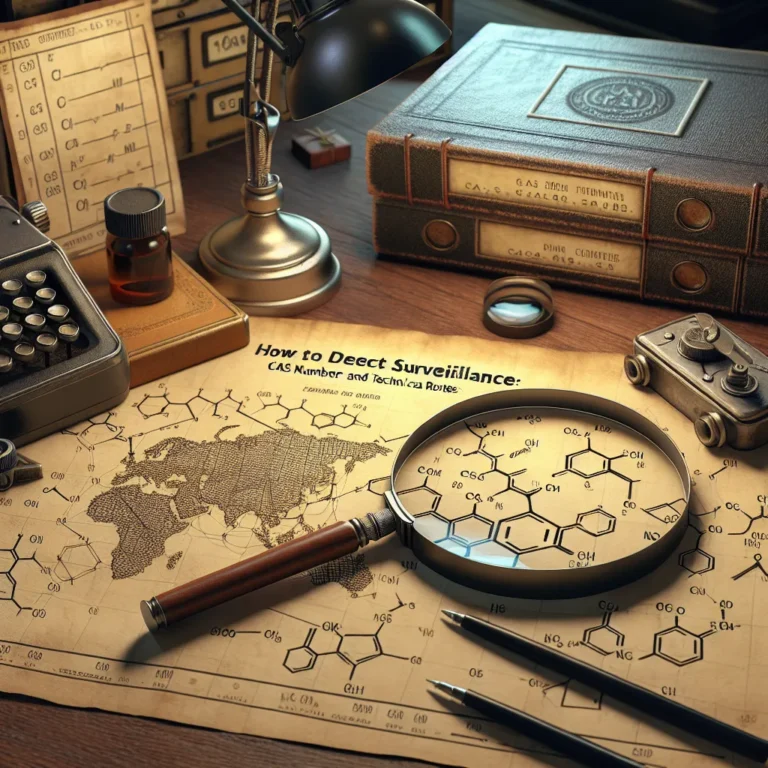
Artykuł kompleksowo omawia kluczowe aspekty zapewnienia bezpieczeństwa maszyn, wskazując na konieczność ciągłego podnoszenia kwalifikacji personelu i wdrażania nowoczesnych rozwiązań technologicznych. Tekst ukazuje, jak praktyczne szkolenia łączą teorię z realnymi symulacjami sytuacji awaryjnych, pozwalając operatorom na skuteczne reagowanie na zagrożenia. Autor podkreśla, że wdrażanie dyrektywy maszynowej oraz bieżąca aktualizacja procedur są fundamentem budowania kultury bezpieczeństwa, mającej wpływ na zdrowie pracowników i wydajność produkcji. Zachęcamy do lektury pełnego artykułu, by poznać szczegółowe strategie minimalizacji ryzyka oraz innowacyjne metody szkoleniowe w obszarze bezpieczeństwa maszyn.

Zdrowe jelita to fundament nie tylko sprawnego trawienia, ale też ogólnego dobrego samopoczucia organizmu. W artykule omówiono, jak wprowadzenie odpowiedniej diety bogatej w błonnik, probiotyki i prebiotyki oraz unikanie przetworzonej żywności wpływa na balans mikroflory jelitowej. Zwrócono także uwagę na rolę naturalnych metod wsparcia układu pokarmowego, takich jak regularna aktywność fizyczna, relaksacja czy suplementacja składnikami o działaniu przeciwzapalnym. Zachęcamy do przeczytania pełnego artykułu, aby poznać szczegółowo skuteczne sposoby dbania o zdrowie swoich jelit.

Baseny termalne Cieplickie stanowią wyjątkową oazę zdrowia i relaksu, gdzie nowoczesna infrastruktura harmonijnie łączy się z naturalnymi walorami leczniczych wód. Oferta tego kompleksu przyciąga zarówno miłośników aktywnego wypoczynku, jak i tych, którzy szukają ukojenia i regeneracji ciała oraz ducha. Dzięki bogactwu minerałów i unikalnym właściwościom termalnych kąpieli, użytkownicy mogą złagodzić dolegliwości reumatyczne i mięśniowe, korzystając jednocześnie z dobroczynnego wpływu otaczającej przyrody. Zapraszamy do lektury całego artykułu, aby odkryć pełnię uroków Cieplickich basenów termalnych i zrozumieć, jak doskonałe połączenie tradycji uzdrowiskowej z nowoczesnymi rozwiązaniami może odmienić Twoje doświadczenia zdrowotne.

American Crew is transforming the wholesale beauty inventory with its innovative, high-quality range of grooming products. Their meticulously crafted solutions empower businesses to stay ahead of industry trends while capitalizing on consumer demand for both classic and modern styling techniques. By integrating American Crew products into your inventory, salons and retailers can enhance professional reputations and secure a competitive edge in a dynamic market. Discover how this trusted brand can drive sustainable growth and elevate your service offerings by reading the full article.

The article "Understanding the Basics of Surveillance Detection" provides essential insights into safeguarding your visit to Poznan city by mastering surveillance detection techniques. Whether strolling through historic streets or experiencing the vibrant culture, being aware of your surroundings and recognizing potential surveillance can significantly enhance your safety and security. Practical strategies for identifying surveillance, such as being mindful of unusual communications, noting vehicles following a consistent pattern, and paying attention to individuals exhibiting suspicious behaviors, are outlined to empower readers to detect and respond to potential threats effectively. The article also emphasizes key considerations for implementing surveillance detection, including selecting optimal vantage points, systematic observation, and having a well-trained security team, all aimed at ensuring a safer and more secure tourist experience at Poznan. It's a must-read for anyone seeking a worry-free visit to this beautiful destination.

Rurociągi przemysłowe odgrywają kluczową rolę w technologicznym rozwoju, umożliwiając efektywny transport substancji w zakładach produkcyjnych oraz wspierając funkcjonowanie nowoczesnych procesów przemysłowych. W świecie gamingu wykorzystanie rurociągów przemysłowych jest coraz bardziej popularne, przyczyniając się do poprawy jakości usług, szybszego przetwarzania danych oraz zmniejszenia opóźnień w działaniu serwerów. Dodatkowo, innowacyjne zastosowania rurociągów w technologii, takie jak szybszy transfer danych, lepsza wydajność systemów chłodzenia czy tworzenie zaawansowanych interaktywnych doświadczeń w grach, otwierają nowe możliwości w dziedzinie przemysłu i rozrywki. Zachęcamy do zapoznania się z całością artykułu, aby dowiedzieć się więcej na temat wykorzystania rurociągów przemysłowych w technologii oraz ich istotnej roli w obu tych dziedzinach.

Artykuł przedstawia trzy kliniki dentystyczne w Corby oferujące wysokiej jakości usługi z zakresu implantologii dentystycznej. Opisując zalety implantów dentystycznych oraz procedury ich wszczepiania, artykuł zachęca do skorzystania z kompleksowej opieki stomatologicznej oferowanej przez te placówki. Wskazuje na profesjonalizm, doświadczenie lekarzy oraz nowoczesny sprzęt medyczny, które przyczyniają się do wysokiej jakości usług. Ponadto podkreśla możliwość skorzystania z profesjonalnej opieki w języku polskim oraz bliskość współpracy z lekarzami o tym samym pochodzeniu, co może być dodatkowym atutem dla polskiej społeczności w Wielkiej Brytanii.czytelnik jest zachęcany do bliższego zapoznania się z ofertą klinik, a także do skorzystania z ich usług w celu przywrócenia zdrowego i pięknego uśmiechu.

Understanding the CAS number, also known as Chemical Abstracts Service number, is crucial for surveillance detection as it serves as a unique identifier for chemical substances. The article highlights how having a deep understanding of CAS numbers and their role can enhance the ability to detect and mitigate surveillance threats effectively. Furthermore, it discusses the technical routes for detecting surveillance activity, including monitoring network traffic, analyzing CAS numbers of substances used in surveillance equipment, and using advanced scanning tools to detect electronic bugs. The article emphasizes that leveraging technical routes and effective strategies can greatly enhance the ability to detect and counteract surveillance activities in various settings, making it a must-read for individuals and organizations concerned about surveillance threats.

W artykule dowiesz się, dlaczego warto mieć w swoim zestawie do nagłych wypadków wypożyczalnię nosidełek turystycznych. Nosidełka stanowią niezbędny element podczas aktywności turystycznych w trudnym terenie, a wynajęcie ich pozwala uniknąć konieczności noszenia sprzętu w innych okresach. Dodatkowo, wypożyczalnie oferują różne modele, co daje możliwość dopasowania nosidełka do indywidualnych potrzeb i warunków podróży. Posiadanie nosidełka turystycznego zapewnia wygodę i bezpieczeństwo w sytuacjach awaryjnych podczas podróży, a wynajęcie takiego sprzętu na wakacyjny wyjazd jest rozsądnym pomysłem, pozwalającym uniknąć zakupu drogiego sprzętu, a także problemów z jego przewozem. Zachęcamy do lektury artykułu, który pomoże Ci zrozumieć, dlaczego wypożyczalnia nosidełek turystycznych może być nieodzownym narzędziem bezpieczeństwa i komfortu podczas podróży turystycznej.

W artykule omawiającym wybór kartoniarki do gamingowego setupu w kontekście streamingu, autor zwraca uwagę na kluczowe aspekty, jakie należy wziąć pod uwagę podczas dokonywania wyboru. Przedstawia 5 istotnych czynników, takich jak jakość obrazu, wydajność kodowania, zgodność z oprogramowaniem, obsługa multipleksowania strumieni oraz wsparcie dla dodatkowych funkcji. Podkreśla, że wybór odpowiedniej kartoniarki stanowi kluczowy krok w budowaniu kompletnego gamingowego setupu streamingowego, a staranne przemyślenie decyzji w oparciu o wymienione czynniki jest niezbędne. Następnie artykuł porusza kwestię porównania najlepszych kartoniarek do streamowania pod kątem cech, takich jak jakość nagrywania wideo, transfer danych, kompatybilność z grami, jakość dźwięku, możliwości personalizacji ustawień czy parametry techniczne. Autor zachęca do analizy oraz porównania różnych modeli, aby znaleźć idealne rozwiązanie zgodne z indywidualnymi preferencjami i oczekiwaniami. Na zakończenie podkreśla, że wybór właściwej kartoniarki stanowi istotne wyzwanie, jednak dogłębna analiza pozwoli znaleźć urządzenie spełniające oczekiwania w kwestii jakości, funkcjonalności oraz wydajności.










